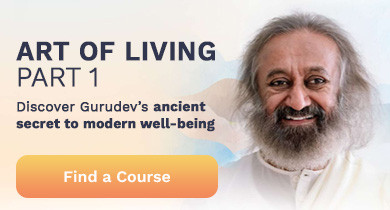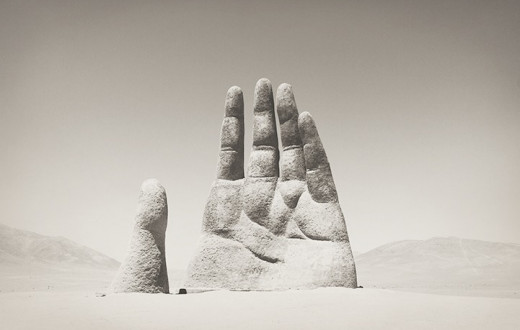
There is a famous old Zen saying, “The obstacle is the path”. This means the obstacle isn’t a roadblock that is standing in our way or hindering our progress; it’s the way itself to help you discover who you really are!
Yoga is considered to be a solid path for spiritual blossoming and transformation. As with any path of this nature, we should expect to face some obstacles as part of the process. But the obstacles that are placed in front of us have their own purpose to serve—they are actually the catalyst for transformation. Overcoming our obstacles can take us closer to the ultimate goal of spiritual liberation!
These obstacles can cause the scattering of the mind. They prevent us from being established in the Self, the real goal of yoga. Hence, it is important to understand them and also learn the skills to overcome them.
What are the obstacles in the path of yoga according to yoga sutras?
In the famous book, The Yoga Sutras, Sage Patanjali, the propounder of yoga, mentions the nine possible obstacles in the yogic path. Every possible obstacle has been counted and included in these nine categories. These nine are often encountered by yoga practitioners.
“Illness, inability to comprehend, doubt, carelessness, laziness, non-attachment towards the senses, hallucination, non-attainment of any state, and instability, these are the distractions of the mind which cause obstacles on the path.” - Patanjali Yoga Sutra 1.30
1. Physical illness
It is difficult to do yoga if you are physically sick. A lack of self-care, whether physical, mental, or emotional may lead to or perpetuate any dis-ease.
It is important to lead a healthy lifestyle that is aimed towards the prevention of illness and the promotion of optimal health. A restorative approach combined with a good self-care routine can help dispel the obstacle of physical illness.
2. Illness in the mind
Mental inability or unwillingness to understand, listen, or follow through with the practice will make success on this path difficult.
Have you ever noticed that your mind is ok when watching a movie for example but when you sit down to meditate suddenly some physical pain or sickness befalls you? Then your body and mind also become restless. This is an obstacle on the path of yoga.
This illness of the mind can also be understood as apathy, a lack of interest and enthusiasm, or boredom.
3. Doubt
The mind can be bogged down by three types of doubts:
Doubt about oneself: Self-doubt or a lack of confidence in our own capacity, power, and potential. Reaffirming faith in ourselves is essential to counteract this block
Doubt about the technique: Sometimes we start doubting our path and technique, take our practice for granted and even give up
Doubt about the teacher: Many a time, we start doubting our teacher and keep going from teacher to teacher
It is important to overcome these doubts and have confidence in yourself, the practice, and your teacher if you want to reach the goal of yoga.
4. Indolence or Carelessness
Doing something you know is wrong or not good for you, or conversely not doing something that you know is good for you is an example of this indolence.
Often we know what we should do (and what we shouldn’t) and yet it can be hard to do what is right. We slack off, we skip things, we forget. We become careless and inattentive. This attitude can prevent us from taking the necessary action for growth. Taking action despite feelings of ambivalence is key to continuing the momentum in our practice.
Yoga is both a science and an art. Approaching it without skill, care, respect, and devotion may create inconsistent and even negative results.
5. Laziness
Laziness can creep up in any aspect of life especially when it comes to doing asanas or exercise. Laziness in the body takes over you, and before you know it your practice has gone out the window.
Yoga requires discipline, zeal, and willpower. Laziness can prevent you from attaining your highest potential.
Sloth, the inertia of mind or body, indicates a need for action and discipline. A great way to get back on track is to lie on your back! Lie on your back and start by rocking back and forth and then moving into a spinal twist or two before lifting the buttocks up into the bridge. These poses get the energy flowing and impel you into practice mode.
6. Indulgence
Over-engaging and not being able to come out of any of the pleasures of the senses can be an obstacle in your path.
This overindulgence is often the result of being driven by internal cravings to the point that you feel you have no control over your senses. You might feel overpowered by them, and like you must satisfy them NOW.
It helps to remember that we are not defined by our thoughts, experiences, feelings, or desires and that all of these cravings eventually subside. By seeing them as passing phases and separate from our true selves, we take away their power to overwhelm us and drive our actions to excess. We merely need to ride out the wave. This is the triumph of what is life-supporting over what is temporarily pleasant.
7. Hallucination
Getting stuck in an imaginative narrative or illusory thinking of the mind.
One of the common tendencies of the mind is the ability to create our own stories based on our experiences and perceptions that not only depict our behavior but also justify it.
This is a very subtle obstacle that has the potential to unravel our progress. We might engage in these narratives throughout the day. The stories we tell ourselves about what is going on often bear very little resemblance to reality. We might think people are gossiping about us, or that our boss is out to get us, or even that dedication to a spiritual teacher will ruin our ability to think for ourselves.
The less narrative we have, the smoother the path to liberation will be.
8. Non-attainment of yogic states
If our yoga practice isn’t leading the attainment of yogic states—the tranquility of mind or internal equanimity—then we’re missing something!
We can get stuck due to fear or even a faulty and inefficient practice. We can have (wrong) ideas about what enlightenment is and then feel worried about achieving this state! Or perhaps our practices are not able to take us further. This can be frustrating and discouraging. Or sometimes we just feel stuck. Like “How am I not enlightened yet?! Why my mind still keeps chattering? What’s taking so long?”.
I’ve found that when I’ve felt stuck but continued with my practice anyway, there has been a major breakthrough on the other side. Patanjali says, “Perfection in practice comes when one continues to practice with sincerity and respect for a long period of time without any interruption”—and without attachment to results. So the key is to continue with your practice, come what may.
9. Failure to maintain a yogic state
An inability to maintain the state of tranquility or equanimity that was attained through the practices is another obstacle. Not getting there is one, and then failing to stay is another!
Sometimes we have a pleasant meditation experience or we master a particular pose, but then that accomplishment seems to evaporate.
For all of the progress that we’ve made with our practice, it’s not that useful if we can’t maintain it. We can fall prey to instability, which may feel like a regression in our results. This is where faith comes in—and willpower.
Again remembering the sutra 1.14, continuing our practice can help us create clarity, space, and stability needed to overcome this obstacle.
What comes along with these obstacles?
Along with these nine obstacles, there are four signs of a disturbed mind:
"Sorrow, bitterness, body not listening to you, shaky and irregular inspiration and expiration are the companions of these distractions." - Patanjali Yoga Sutra
You might have been asking yourself how to know if you have fallen prey to any of the 9 obstacles. What is too much inertia and what is rest? What is enjoying your senses and what is overindulging? If any of the 9 obstacles appear in your path, you will experience the following sighs:
Sorrow and sadness. Perhaps you cry more than usual or feel sad and unenthused about life, wondering what the point is.
Bitterness in the heart and mind. You feel bitter inside. You don’t get along with those around you and don’t feel good about yourself either.
Your body does not listen to you. You experience restlessness in your body or a lack of coordination between your body and your mind.
Irregular, shaky, uncomfortable breathing. Your breathing is shallow, irregular, and contracted. You might even feel like you’re constantly holding your breath, and are unable to breathe out fully.
Overcoming the obstacles: how to get rid of these hurdles in yoga practice?
Dedication and perseverance are the keys to overcoming these obstacles. Just like a river overcomes all obstacles in its way and keeps flowing towards its ultimate goal, similarly, if you continue with your consistent practice, you will overcome the obstacles.
Obstacles are valuable pointers that show us how to develop towards our full potential. We can’t avoid them but we can gratefully accept them and transform them into the wonder that is hidden in them. Luckily, the great sage Patanjali has given us a troubleshooting guide. Knowing and studying this guide will give you more skill, compassion, and understanding of how to overcome obstacles so you can progress on your path.
Practicing yoga consistently with one-pointed attention is the key
"To overcome them or for their prevention, practice one principle." - Patanjali Yoga Sutra 1. 32
With practice and consistency, these obstacles will pass with time. To get rid of them, do just one thing, single-pointed attention on one thing. It could be a practice, a path, or even a guru or teacher. This brings clarity and reduces distractions. The single-pointed mind is whole and complete. It is the source of joy, peace, and bliss. Single-pointed focus is the way to overcome these distractions.
By focusing all of your attention on a single principle the obstacles dissolve and begin to lose their grip on you.
Whether you are a beginner or advanced practitioner, those on the path of wisdom and enlightenment will encounter many obstacles, maybe a few of the above-mentioned or perhaps all. It is important to remember that sincere practitioners must continue to practice in spite of the obstacles. Daily practice over a long period of time is the best remedy against all obstacles. Joining our online yoga studio may help you to keep up regular practice. Teaching is the best way of learning and practicing. You may also explore our 200 HR teacher training program and how to become a certified yoga teacher.
Would you like to add SKY Breath Meditation to your daily practice?
Join us for a free introductory session to find out more about SKY and how it can transform your yoga practice.






























